Washing machines semi-automatic
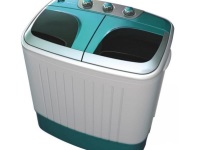
Although automatic models of washing machines are now very popular, semi-automatic machines are also in demand, because not every house in our country has the conditions for connecting a machine. Automatic machines are often seen in cottages and villages, and mini-models with an automatic wringer are often useful for owners of oversized apartments with tiny bathrooms.
Automatic washing machine differences
Semi-automatic machines differ from automatic machines:
- Only vertical loading of laundry.
- A smaller number of washing modes.
- The need for manual labor, as well as control by the hostess.
- Smaller size.
- Less weight.
- Faster washing times.
- Easier operation.
- Greater reliability and fewer breakdowns.
- Lower cost.
- The ability to simultaneously wash and spin laundry in different tanks (only in machines with two tanks).
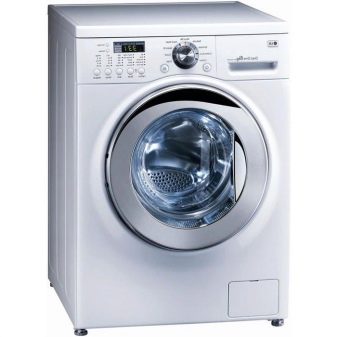
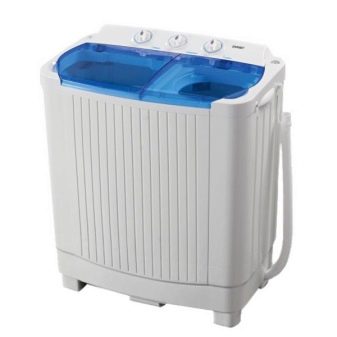
Pros of
- Such a machine comes in handy in the absence of a centralized water supply. That's why a semi-automatic machine is often chosen for installation in a cottage or farmhouse.
- Semi-automatic machine saves water and electricity.
- In the use of such a model of washing machine is very simple, at the same time it copes well with the task of quickly washing laundry.
- For washing in such a machine, you can use any powder, even for hand washing.
- Since there is no complicated electronics in a semi-automatic, as well as no heater, such machines break down less often, and their repair is much cheaper than the repair of an automatic model.
- You can save water and powder in a semi-automatic machine, if you wash white laundry in such a machine, and then, without draining the water, wash dark clothes in it.
- Laundry can be added to or removed from the machine at any time of washing.
- The cost of semi-automatic machines is low, so such equipment is available to any user.
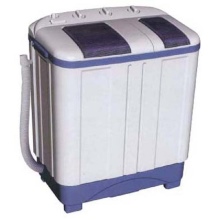
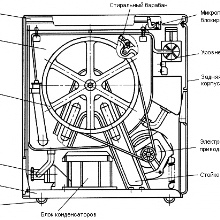
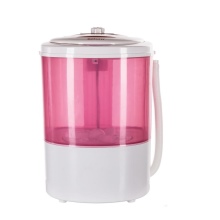
Cons
- For rinsing, the semi-automatic machine needs to be refilled with water, which increases its consumption.
- In models without a spin you can only wash the laundry, and you have to spin the items manually.
- Washing efficiency in semi-automatic machines is not high.
- You will not be able to leave the washing machine for a long time, as it is necessary to remove the laundry, drain the water and carry out other manipulations.
- When the hot water is turned off, using a semi-automatic machine is an added hassle.
- Since the loading in semi-automatic machines is vertical, nothing can be stored on top of such machines, which is a very tangible disadvantage for a tiny bathroom.
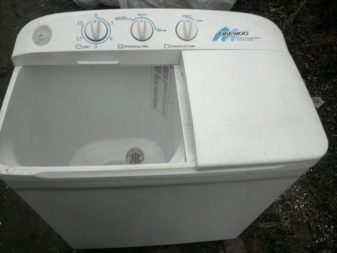
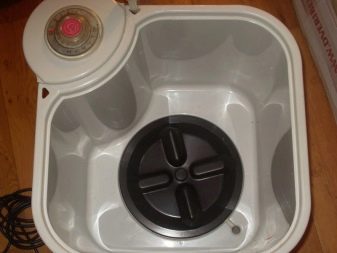
Types of .
Depending on the principle of operation, the semi-automatic machine can be:
- drum;
- activator.
Activator models are more common due to their economy and reliability. At the bottom of their tank is a disk, which begins to rotate under the influence of the motor. Drum models have a perforated drum.
Also such machines differ in the number of tanks. There may be one tank in a semi-automatic machine, and then the washing and rinsing are carried out in it, and the laundry is spun manually. There are also machines with two tanks - in one of them the laundry is washed, and the second is wrung out.
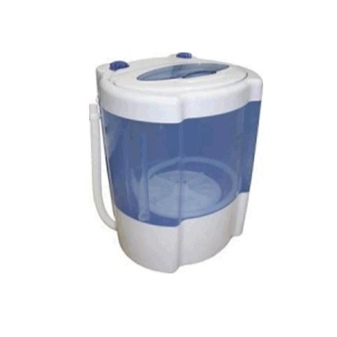
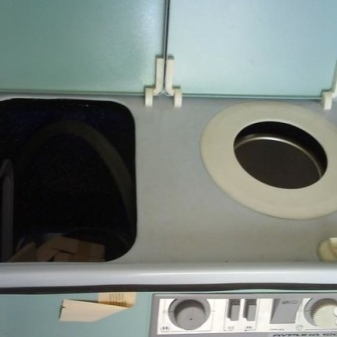
Another difference between different semi-automatic machines is the presence of reverse. In models that have this function, the laundry is spun in both directions, and in machines without reverse, the clothes rotate only in one side during the washing.
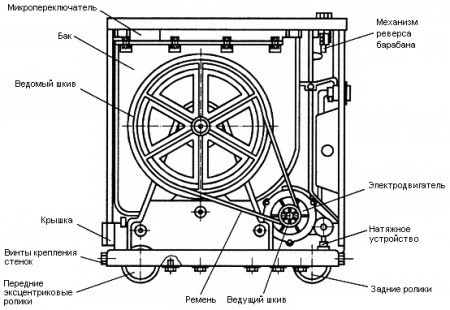
Price
The cost of semi-automatic machines, if you compare with the prices of most automatic machines, is quite low. You can buy them for 2-5 thousand rubles, and used equipment is even cheaper.
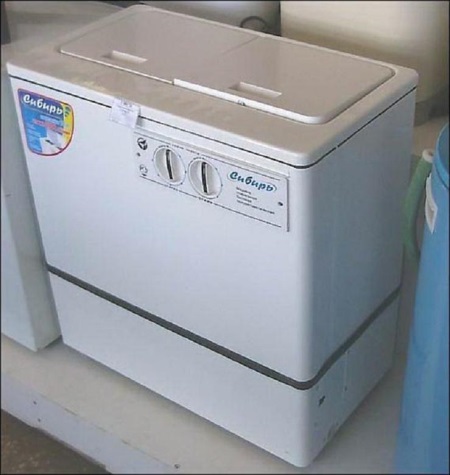
Important functions
Squeezing
Most semi-automatic machines have a spin option. If the machine has two tanks, the spin is performed in the centrifuge, which is installed in one of them. On single-tank models, the spin may not be performed or may be performed in the same tank.
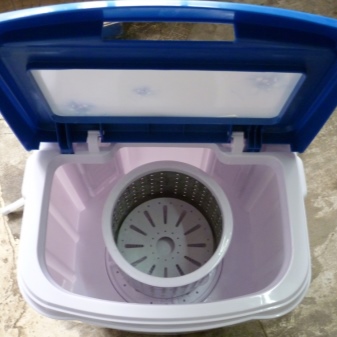
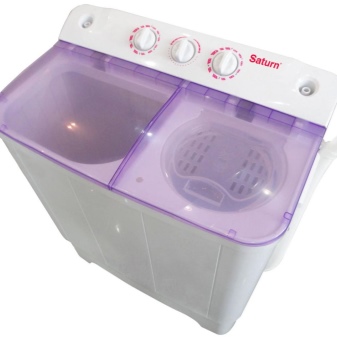
Rinse
To rinse in a semi-automatic machine, you have to pour clean water into the machine several times. The laundry is removed after washing and the dirty water is drained out, then the machine is filled with clean water, the laundry is returned to it and the rinse mode is activated.
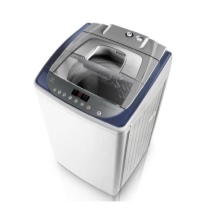
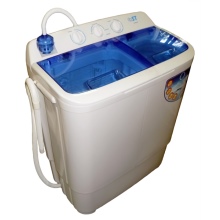
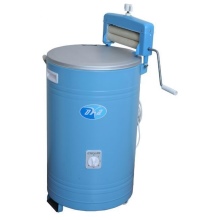
Draining
In many semi-automatic machines, water is drained manually. The presence of a drain pump for machines of this type is a rarity.
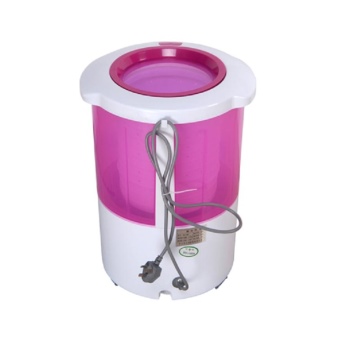
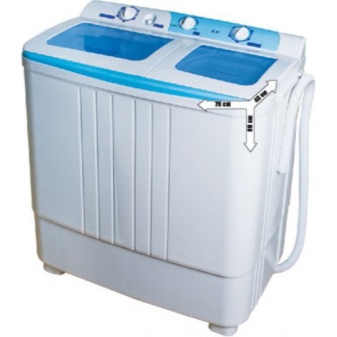
Overview of popular models
Feya
One of the popular oversized semi-automatic machines of domestic production. Its advantages are an affordable price, good functionality and compact size. Among the minuses note a small capacity, low washing class, a small number of functions, outdated design, as well as the lack of spin in some models.
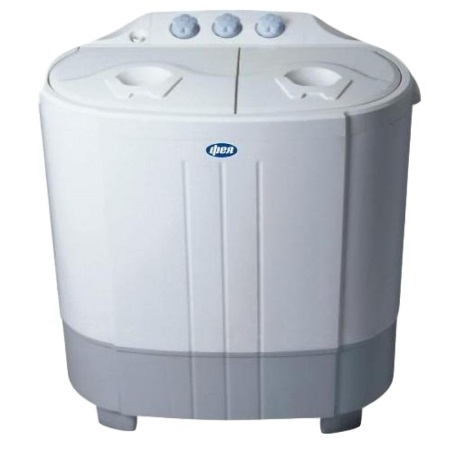
Assol
Pretty popular machine from the domestic manufacturer, in which you can wash up to 5 kg of laundry, and spin in the centrifuge up to 3.5 kg of washed clothes. Such a machine is controlled mechanically.
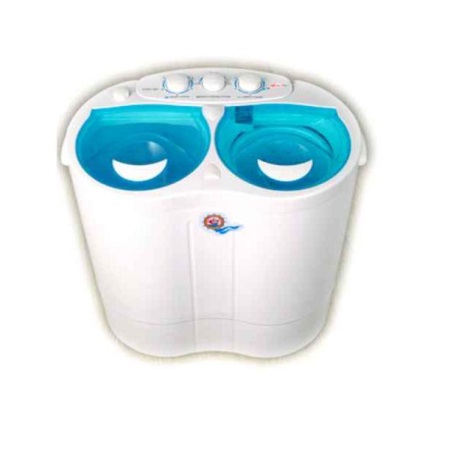
Eureka .
The main difference of such a semi-automatic machine is a mechanism that switches cycles in steps. In addition to normal and gentle washing mode, such a machine has four rinse modes. Accommodates such a machine up to 3 kg of clothes, so it has a fairly compact size. In addition, this model has a drain pump.
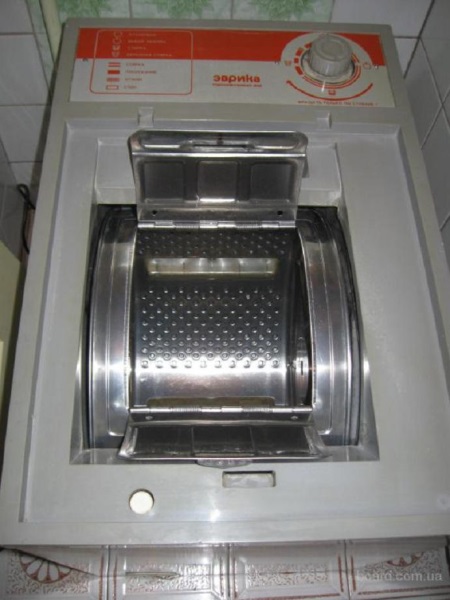
Saturn .
Semi-automatic machines of this manufacturer are represented by a large range. They are economical, can be installed anywhere. One of the most popular models of Saturn machines has a depth of 36 cm.
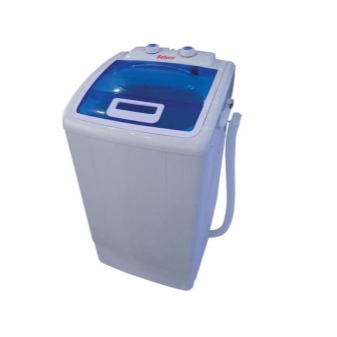
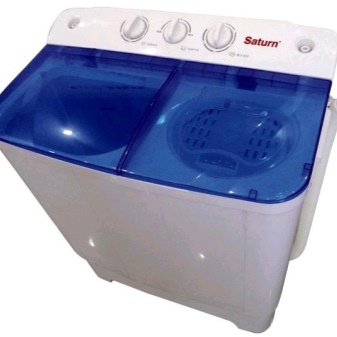
Zanussi FCS 825 C
Italian semi-automatic machine in which you can wash delicate fabrics and wool. It can be loaded with up to 3 kg of laundry. Using such a machine is very simple, but this machine is relatively expensive.
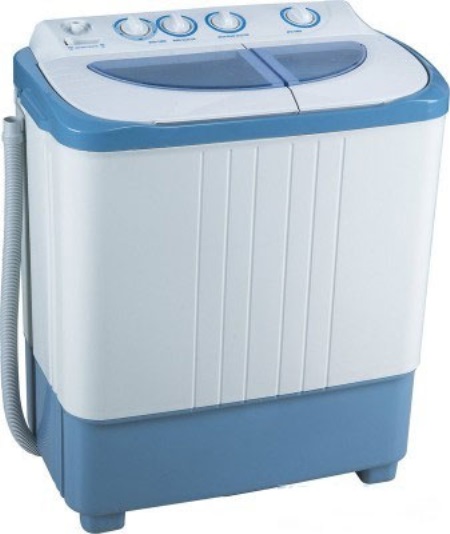
UNIT-210
Austrian semi-automatic machine with normal and delicate washing modes, as well as a rinse. The machine holds 3.5 kg of clothes and has an affordable price. However, in such a machine can not be washed in too hot water (more than +55ºC).
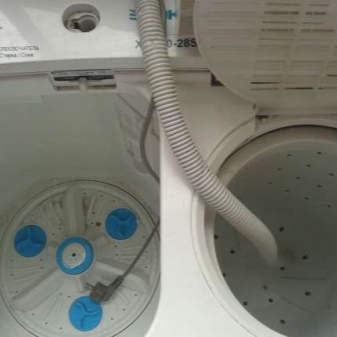
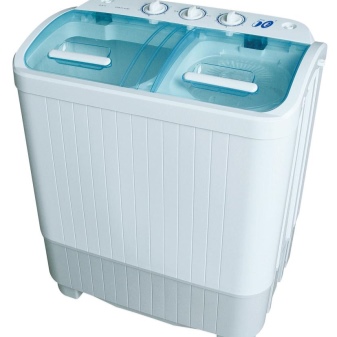
Another variety of semi-automatic machines of this brand is a device UNIT-100. To assess its merits, you can watch a video, filmed by one of the users:
Installation
You can install the semi-automatic model in any place where it can be connected to electricity. Connection to water and sewage for such devices is not required, so the choice of location for installation is much wider than for automatic units.
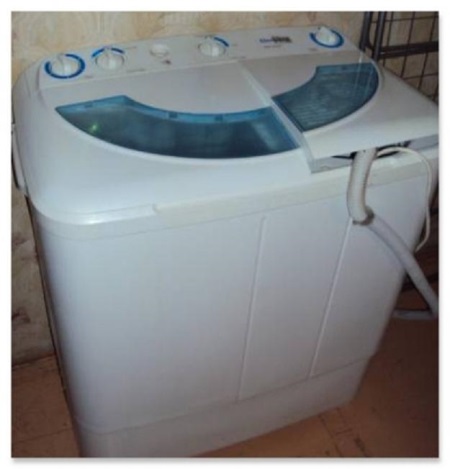
Instructions for use
The stages of using a semi-automatic machine will be as follows:
- Heating water to the desired temperature (usually +40ºC). In some models, the water is heated in the machine.
- Pouring warm water into the tank, adding detergent to it and loading the laundry.
- Setting the washing time and selecting the program (in some machines in addition to the standard mode there is a delicate mode).
- After a short wash, removing the laundry from the machine and drain the dirty water.
- Pouring clean water into the machine and loading the laundry for rinsing.
- Squeezing the clean laundry in a separate tank. Some machines wring the laundry in the same tank, but there are also models without a spin, after washing which have to wring things by hand.
- Drainage of water from the machine.
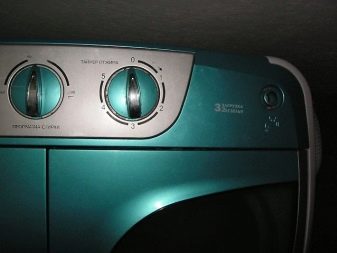
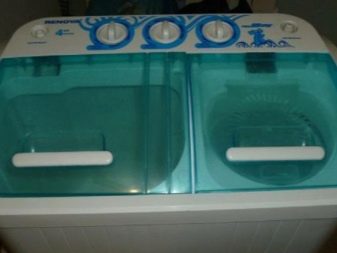
Is there any difficulty with the repair?
Due to the simplicity of design, semi-automatic machines break quite rarely. They may have such malfunctions:
- The motor does not turn on when you switch modes. Such a situation could be due to failure of a relay, capacitor, brushes, transformer or other parts. When the faulty part is found, it is repaired or replaced with a new one. Sometimes the cause of the malfunction is a wire break, for the identification of which check the wiring diagram.
- Squeezing does not start, although the motor runs. The cause may lie in the overload of the machine with laundry or too much water. If this is the case, some of the items should be removed from the tank, and the excess water should be removed. You should also check the centrifuge brake.
- The rotor does not start to rotate, although the motor is functioning normally. This may be due to wear of the diaphragm bushings (they will have to be replaced) or unevenly unfolded laundry.
- From under the machine begins to leak water. Such a breakdown can be caused by damage to the tank, loosening of the rubber collar fastening, damage to the drain valve or malfunction of the drain pump.
- The centrifuge does not start, although the motor is in good order. This may be caused by a loose drive belt.
- The motor is not running. The problem may be with the motor itself or with its power cable. If the part cannot be repaired, replace the motor with a functioning one.
- The centrifuge is flooded with water from the tank. This situation is caused by a clog in the bypass valve. Disconnecting the machine from the mains and removing water from it, the valve is cleaned, and then restart the machine.
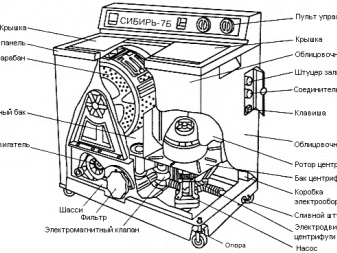
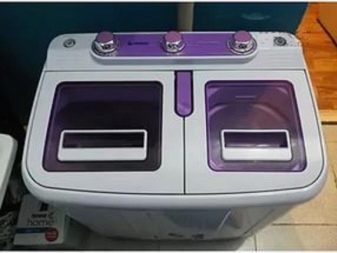
Reviews
Owners of semi-automatic machines are satisfied with their purchase, if it fully meets their requirements. Positive reviews can be heard from people who purchased the machine for use in the country house or in a private home without running water. They like the short washing cycle, low weight and low cost of semi-automatic machines.
The advantages of semi-automatic washing machines and positive reviews of the washing equipment of the economy class are presented in a brief but informative report, which appeared on the channel "News 24":




